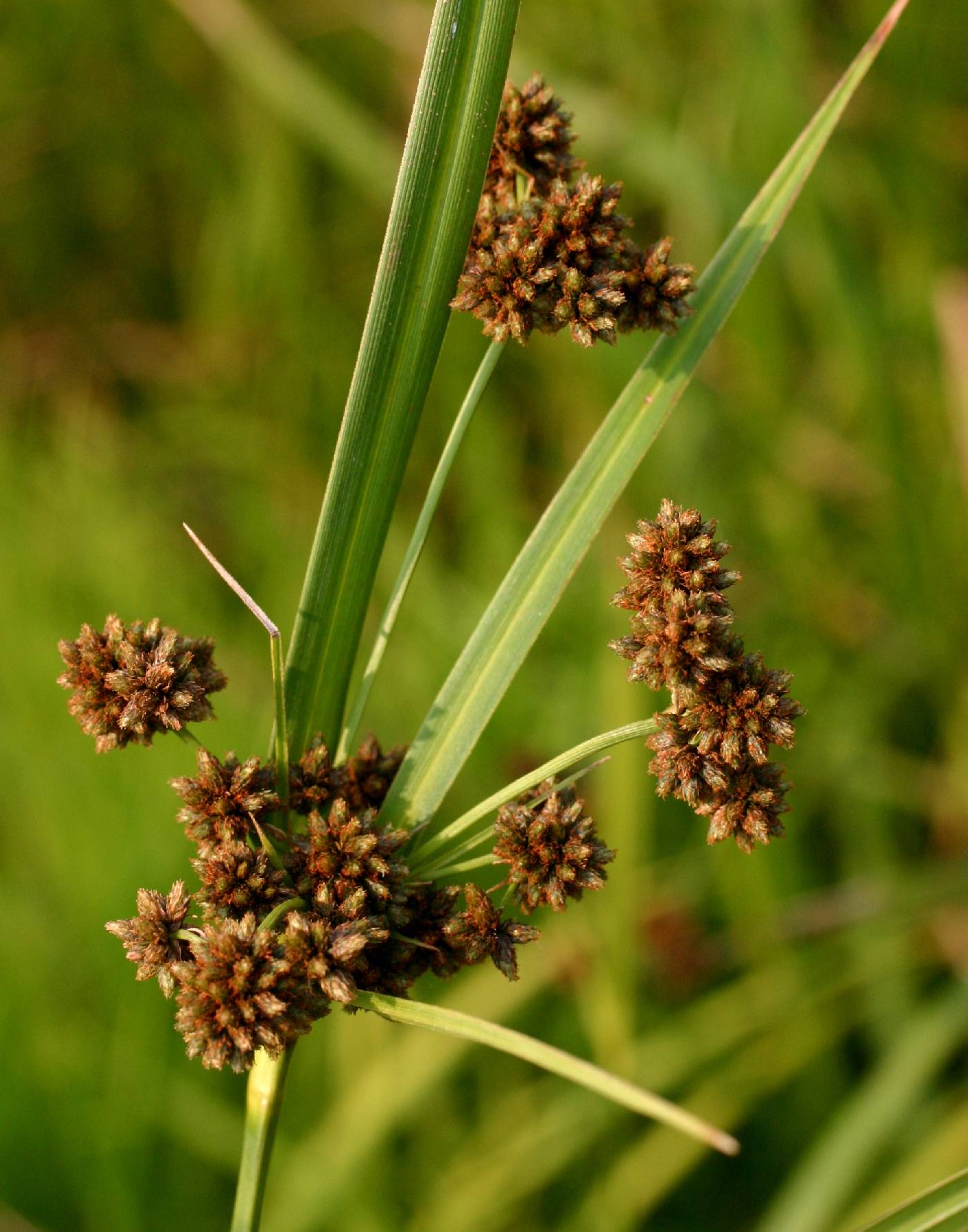Scirpus
|
Family: Cyperaceae |
Herbs, perennial, cespitose or not, rhizomatous or not. Culms solitary or not, ± trigonous. Leaves basal and cauline or all cauline; sheaths not fibrous; ligules present, rarely absent; blades flat or V-shaped in cross section, prominently keeled abaxially. Inflorescences terminal, sometimes also axillary in 1-3 distal leaves, subumbellate or corymbose-paniculate; spikelets 50-500; involucral bracts usually 3, leaflike. Spikelets less than 3.5(-5) mm diam.; scales 10-50, spirally arranged, each scale subtending flower, glabrous. Flowers bisexual; perianth of (0-)3-6 bristles; bristles straight or strongly curled, smooth, or variously toothed, or barbed, shorter to much longer than achene, not obscuring scales in fruit; stamens 1-3; styles (2-)3-fid, linear, base persistent. Achenes trigonous, biconvex or plano-convex, 0.6-1.8 mm, minutely papillose. x = 14. Culms are unbranched proximal to the inflorescence and reach 30-200 cm. Leaves range from 3 to 22(-26) per culm and are 3-ranked; blades are always well developed, 110-800 × 3-23 mm, smooth or with scabrous margins and midribs. The inflorescence in Scirpus is a large compound cyme of 50-500 spikelets per inflorescence. The spikelets in the individual cymules may be sessile, with the cymules forming dense glomerules of spikelets, or the lateral (never terminal!) spikelets may be pedicellate, with the inflorescence larger and more open. Involucral bracts are spreading or ascending, 13-230 mm, or exceeding spikelets, smooth or margins and midrib scabrous. Scales are deciduous, green, brown, or blackish, not keeled, without lateral ribs, uniform in length along spikelet, and the apex rounded to obtuse, mucronate, or short-awned. When present the perianth is usually persistent, rarely caducous, white or brown; bristles are vestigial or to 8 mm, shorter to much longer than the scale; margins are smooth or antrorsely or retrorsely toothed or barbed. The filaments often persist after the anthers have been shed, and they are sometimes mistaken for perianth bristles. Only three filaments occur per flower; they are thicker than the bristles, do not taper distally like the bristles, and, unlike bristles in some species, are neither toothed nor contorted. The perigynium is absent. Scirpus hybrids are usually sterile, or at least show greatly reduced fertility. Interspecific hybrids are usually easy to recognize because most or all of their ovaries are empty. In addition, their spikelets are often more elongate than the spikelets of the parent species; this is probably a result of low seed sets, because growth of the spikelet is not halted as nutrition is diverted to developing seeds. Some species of Scirpus are weedy, and their small achenes are well adapted for accidental transport by humans. Most of the disjunct, outlying populations in species such as Scirpus pendulus and S. pallidus probably represent human introductions.
Scales spirally arranged, ±scarious; fls perfect, each in the axil of a scale; perianth of (1-)3-6 short to elongate bristles, or seldom obsolete; stamens 3, or sometimes fewer; style 2-3-cleft, either completely deciduous or more often deciduous above the base and leaving a slender tip on the achene; herbs, mostly of wet places, with variously arranged spikelets. 200+, cosmop. The diffuse centromere may contribute to the frequent interfertility of plants with different numbers of chromosomes. Gleason, Henry A. & Cronquist, Arthur J. 1991. Manual of vascular plants of northeastern United States and adjacent Canada. lxxv + 910 pp. ©The New York Botanical Garden. All rights reserved. Used by permission. |

